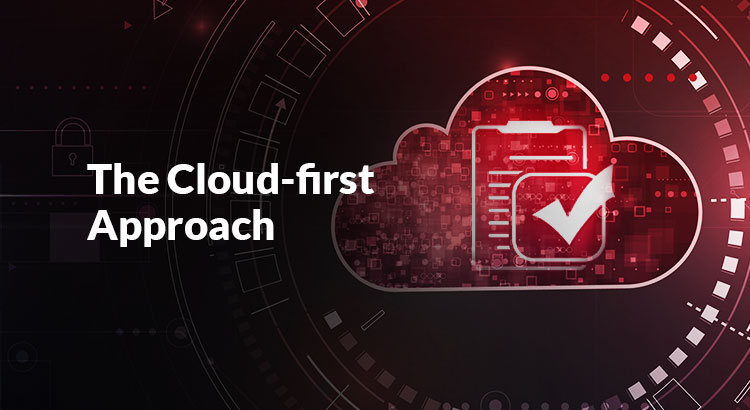Overview
Post-pandemic, businesses are looking for IT agility and increased mobility with many organizations opting for a cloud-first approach. Indeed, what we are witnessing now is the increased pace of cloud adoption. More and more organizations are adopting multiple public clouds, agile development platforms, and containerization technologies to boost overall IT efficiency.
Nevertheless, whatever be the industry or organization size, one concern (or maybe priority) remains the same ie. cloud access governance and data security. To keep up with the expanding cloud infrastructure, today’s organizations require unambiguous and fundamental governance programs to mitigate the various threats and vulnerabilities arising from the adoption of disparate cloud technologies.
Compliance with guidelines mandated by various regulatory authorities and IT standards plays a big role to ensure data security, implement adequate IT security policy and above all – maintain the digital trust and reliability among customers.
So what could be done to ensure Cloud Compliance? What importance do organizations give to cloud compliance in a modern IT infrastructure?
Cloud-first approach and governance challenges: Where is the loophole?
Typically, organizations opt for cloud platforms long before they are ready for it and are aware of the compliance standards. This complicates the situation. Once an organization migrates the workloads and data on cloud, it should first align its security framework with the best practices on cloud.
It should ask whether the cloud service provider (CSP) can enable them to implement the guidelines. If yes, at what level? In general, CSPs will provide a basic security framework to protect data, but ensuring a foolproof security posture is a shared responsibility between the CSP and the organization which migrates the workloads to the cloud. It is extremely critical for an organization to alter its policies as per compliance requirements. The round table should start before the cloud service is deployed and not after that.
Cloud compliance is one of the leading challenges faced by organizations that aim to migrate existing workloads to the cloud. Our market research suggests that more than 50% of organizations face the compliance and audit challenges associated with IaaS infrastructure. Among them, 32% of organizations find that the access control mechanisms and user authorization policies are inadequate to secure cloud access and ensure governance. So what could be done?
Adhering to compliance frameworks helps to build the foundation for a robust cloud governance framework. For instance, in the US there are several cloud governance guidelines and certifications that help organizations to build a reliable security posture. In this blog we have covered some of those guidelines. Information security professionals can align their security controls by developing a framework from those certifications and guidelines, regardless of geographical location.
- FedRAMP or the “Federal Risk and Authorization Management Program” compliance standardizes security assessment and authorization for cloud products and services used by U.S. federal agencies. The basic and standard objective of this compliance is to make sure that the federal data is consistently monitored and protected with a high level of security on-cloud.
- The objective of NIST or National Institute of Standards and Technology compliance is to comply with the requirements of one or more NIST standards. The primary role of this non-regulatory agency under the US Department of Commerce is to develop security standards (mainly security controls) for various industries.
- Developed by the American Institute of CPAs (AICPA), SOC 2 compliance is a standard for service organizations that specifies how organizations should manage customer data. This compliance standard is based on the Criteria: security, availability, processing integrity, confidentiality, and privacy.
Here are some of the requirements mandated by these standards:
FedRAMP:
- Access Control Policy and Procedures
- Least Privilege
- Authorized Access to Security functions
- Least Privilege – Non privileged access for non-security functions
- Least Privilege – Network Access to Privileged commands
- Least Privilege – Prohibit non-privileged users from executing privileged functions
- Remote Access – Automated Monitoring
- Remote Access – Privileged Access
- Audit and Accountability
- Audit Review Analysis and Reporting
- Continuous Monitoring
- Identification and Authentication Policy and Procedure
- Identification and Authentication (Organizational Users)
- Identification and Authentication (Network Access to Privileged Accounts)
- Authenticator Management (Password-based Authentication)
- Security Awareness | Insider Threat
NIST:
- Cloud Service Provider (CSP) Provisioning
- Cloud Auditor
- Cloud Computing (secured on-demand network access and rapid user provisioning)
- Multi-cloud (governance)
SOC2
- Control Third-party in Cloud environment
Essentially what these guidelines require from organizations and CSPs are to have an ability to allocate resources based on predefined policies and procedures along with monitoring and auditing of those resources, especially around privileged accounts. These guidelines help to establish parameters that in turn enable organizations to meet the best practices in cloud governance whilst managing the compliance requirements.
At ARCON, we have been developing cloud-native applications as we want to ensure organizations’ cloud-first journey is a success. A host of solutions such as ARCON | Privileged Access Management, My Vault, Identity and Access Management solutions help to reinforce the governance framework around the cloud infrastructure.
Whether edge devices, mission-critical applications, network devices or secrets in CI/CD pipelines – our solutions provide adequate layers of security to mitigate data breach vulnerabilities. User provisioning (de-provisioning), the discovery of all privileged accounts, JIT Privileges for implementing the least privilege approach, Vaults to manage and securely store passwords, certificates, keys, tokens and secrets along with strong monitoring and reporting engine ensures that all the guidelines being mandated by various standards are complied with.
Conclusion
The acceptance and proliferation of cloud technologies is necessitating the adherence to compliance mandates. When implemented effectively by CSP and cloud users, a robust cloud governance framework can be built to mitigate data breach vulnerabilities.

